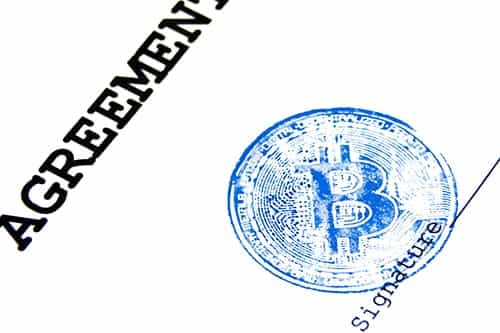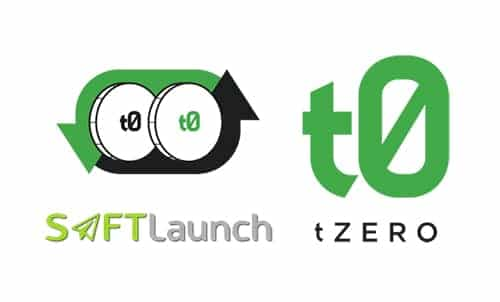What are SAFT Agreements?: Complete Beginners Guide
Initial Coin Offerings, or ICOs, have been around since 2013, but as their popularity has grown, so too has the regulatory scrutiny surrounding them grown. One huge point of contention from government regulators is how to classify ICOs.
By the regulators own admissions the ICOs can transform, starting as a security, but later transforming into a commodity or other asset type. According to CFTC Commissioner Brian Quintenz
ICOs, these things can transform. They may start their life as a security from a capital-raising perspective but then at some point (…) turn into a commodity
This confusion has led to the creation of something called the Simple Agreement for Future Tokens (SAFT), which is meant to help investors skirt the confusion over the classification of ICO tokens. The SAFT was seen as necessary because utility tokens issued before the network is functional could be considered securities based on the Howey Test, leading to future legal problems for investors.
Under Section 5 of the Securities Act of 1933 it is illegal to issue unregistered securities, and those breaking this law can face severe monetary penalties, and up to 5 years in federal prison.
Even the secondary markets that facilitate trade in the tokens could find themselves liable if they aren’t properly registered as a broker-dealer, exchange or alternative trading system. And if an organization issues tokens which they claim are not securities must use a registration exemption, or evaluate the “Blue Sky” securities laws of all states in which token buyers reside.
How SAFT Agreements Work

The SAFT framework hopes to resolve uncertainties regarding ICO investing for both the issuer and the investor. It is designed to be used with tokens that the issuer believes will be classified as a utility in the future. The SAFT agreement itself is a security and it specifies the delivery of a given quantity of tokens to the holder once a network or application has been developed that can use the tokens.
By using the SAFT the issuer and investors are betting that the SEC will not classify the tokens as securities at the later date when they are being used as utility tokens for an application or network. This avoids the possibility of the tokens being classified as a security during the ICO process when there is no existing use case for the tokens.
As a basic explanation, the SAFT will work like this:
- The developer of a decentralized, token based network creates an SAFT agreement with accredited investors. The SAFT specifies how much the investors will pay for the right to collect tokens at a later date, once the network or application is functional. There is usually a discount rate for this purchase and there are no tokens issued at this time. The developers will complete and file all appropriate forms with the SEC.
- The developer uses the received funds for the development of the network or application. There is typically no timeline for this and it could take months, or it could take years. There are still no tokens issued during this development phase.
- Once the developer has created a basic network functionality they create the tokens and release them to their SAFT investors. The investors can hold the tokens or they are free to sell them immediately to realize a profit.
- Now that the network is functioning the tokens are utility tokens, and the developers can freely sell tokens to the public without needing an SAFT.
SAFTs Used in ICOs
The SAFT framework has allowed blockchain projects looking to conduct an ICO that attracts U.S. investors to remain compliant with U.S. securities laws and financial regulations. This means we have seen some of the largest ICOs using SAFT agreements.
One well known project which used an SAFT agreement was Filecoin, which raised more than $257 million in its ICO. These funds will be used to develop its planned decentralized cloud storage platform.
More recently the instant messaging app Telegram utilized an SAFT agreement to attract U.S. investors, and subsequently reportedly raised $850 million during its token pre-sale.
Benefits of SAFT Agreements
By creating a two-step process the SAFT framework is allowing start-up blockchain projects to secure financing that actually fits with the stage of development and intent of the token. By following the framework as outlined in the SAFT white paper a project can have a token sale that is compliant with current SEC regulations, and avoid excessive risk. More importantly, it affords institutional investors the confidence to participate in token sales that might otherwise be questionable in the U.S. from a legal perspective.

Marco Santori, who created the SAFT whitepaper, sees the framework as one way of working within existing securities laws. He isn’t waiting for legislative change to accommodate blockchain technology, but instead paved the way for start-up project to benefit from institutional funding. The SAFT also gives institutional investors access to new blockchain projects, and also allows for an active secondary market.
The SAFT framework addresses one of the SEC concerns regarding ICOs by putting the majority of risk burden on wealthy individuals and institutions, rather than on small retail investors.
The SAFT solution could lead to more U.S. based blockchain projects as well, keeping the new technology and jobs in the U.S. rather than overseas. The past 18 months or so has seen many projects relocating to financially neutral jurisdictions such as Switzerland and Hong Kong due to the ambiguity of existing U.S. regulations and laws in connection with blockchain technology and raising capital. The SAFT framework gives these projects increased clarity in regards to securities law, taxation, and money services.
Downsides to the SAFT Framework
The intention of the SAFT framework is to keep future tokens, which have utility and a use case, from being classified as securities. While this theoretically seems valid, the SEC has yet to confirm if this is in fact the case. And recent rulings have actually indicated that the SEC is leaning towards classifying all cryptocurrencies as securities, which would negate all the benefits of SAFT agreements. According to the Cardozo Blockchain Project
Artificially dividing the overall investment scheme into multiple events does not change the fact that accredited investors purchase tokens (albeit through SAFTs) for investment purposes, and likely will not prevent a court from considering these realities when assessing whether these tokens are securities
There are other downsides to the SAFT framework, including:
- The SAFT isn’t useful at all for tokens that are in fact securities (e.g. limited partnership interests like the DAO token). Using a SAFT won’t make a securities token any less of a security. The SAFT was designed to be used with utility tokens, and won’t work if applied to actual security tokens.
- It won’t aid even utility tokens that can’t pass the Howey Test. This is where purchasers remain reliant on the efforts of the token sellers (or others) for their expectation of profit after the token is circulating. Examples include situations where the seller relies on the issuer’s promises to buy back the tokens to increase the price, or where the seller promises to develop the truly valuable functionality at some point after the sale.
- The SAFT framework isn’t useful on a global scale since it was developed with a focus on U.S. securities regulations and financial laws. This could even lead to the use of an SAFT agreement being deemed illegal in other jurisdictions around the world, at least partially negating the benefit gained from the agreement.
- The SAFT approach only includes accredited investors (institutions and wealthy individuals), which excludes the general public from participating in the first (and potentially most profitable) part of any token sale using the SAFT framework.
Trading SAFT Securities

In the near future it might even be possible to trade security tokens issued in accordance with SEC regulations. Online retailer Overstock, which has long been a proponent of blockchain technology, is working on a licensed security token trading platform called tZERO.
The ICO for the platform began in December 2017, and is currently extended to August 6, 2018. Overstock CEO Patrick Byrne has stated that token holders will be entitled to quarterly dividends derived from the profits of the tZERO platform.
Conclusion
Because we don’t know the SEC stance on SAFT agreements it’s difficult to say if they will become increasingly useful going forward, or if they will eventually die out. As long as the SEC doesn’t simply rule broadly that all cryptocurrencies are securities (which doesn’t seem likely), the SAFT agreement will have utility for blockchain projects looking to raise capital for utility token projects.
Additionally, it gives institutional investors a way to invest in blockchain projects since the SAFT agreement itself is deemed to be a security. This means many institutional investors that might be blocked from investing in a cryptocurrency by their mandate will be able to participate in ICOs that use an SAFT agreement.
The big downside that most of us need to contend with is that SAFT agreements aren’t suitable for individual investors. Overstock might get around that with their tZERO platform, but with the ICO for that project dragging on for 8 months already, who knows when the project might launch – if ever.
Disclaimer: These are the writer’s opinions and should not be considered investment advice. Readers should do their own research.
